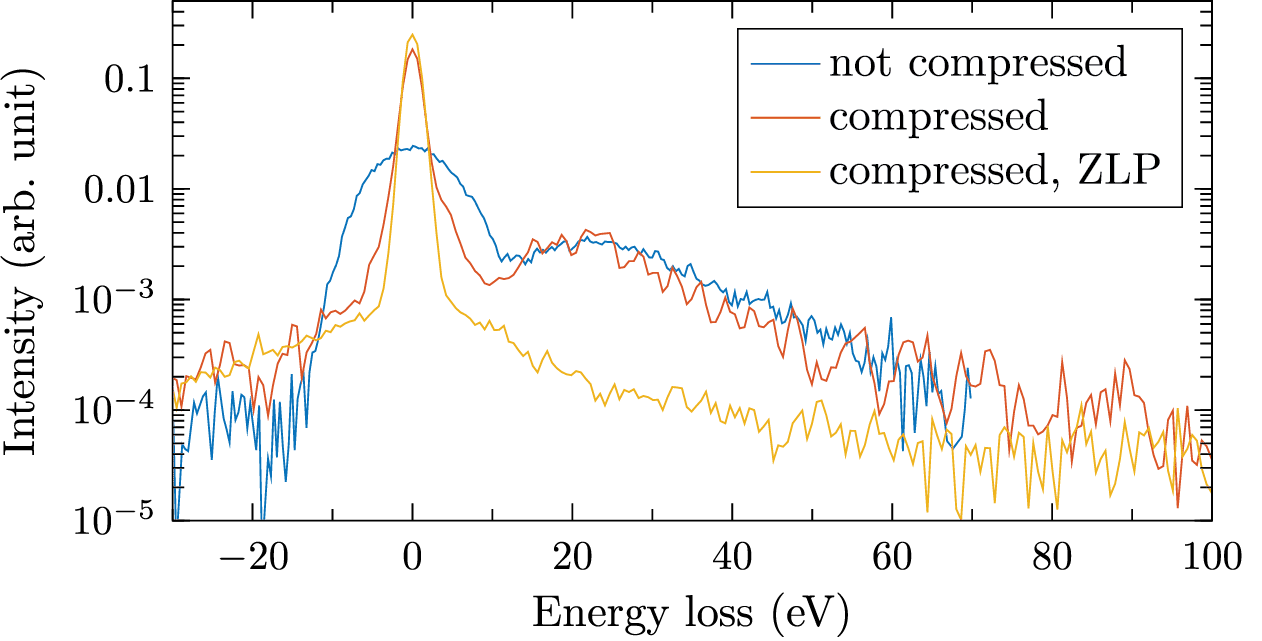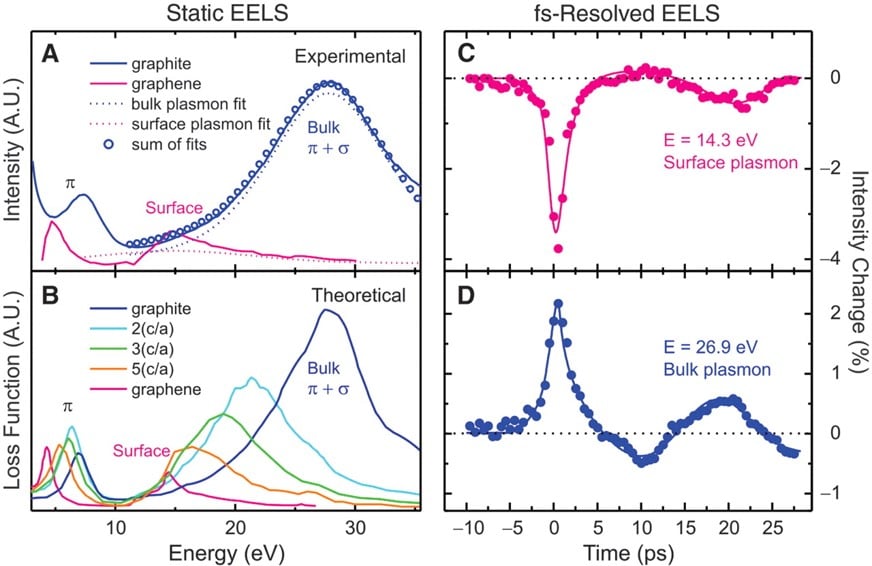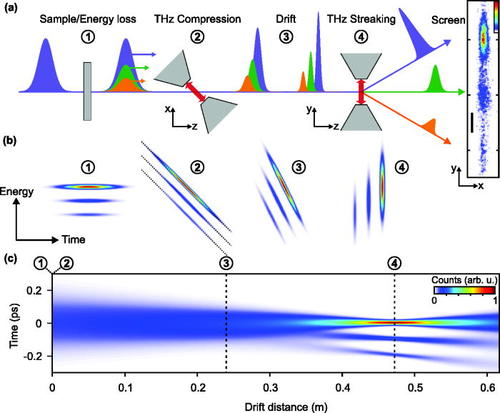Ultrafast Electron Spectroscopy
At Eindhoven University of Technology a new method has been developed for performing time-resolved electron energy loss spectroscopy. Instead of the conventional bending magnet spectrometer, microwave cavities are used to disperse and detect energy losses in an efficient manner in a time-of-flight measuring scheme. They offer larger dispersions and higher current throughput, resulting in a more efficient detection than conventional methods.

The use of two cavities for a time-of-flight measurement was demonstrated first in [1]. Then, an improved method was devised [2] in which a total of four cavities is used. The two additional cavities act as as longitudinal or temporal lenses which create a longitudinally magnified ‘image’ of the energy loss suffered by the electron pulses. Using detailed particle tracking simulations, the energy resolution achievable in such a setup is found to be 25 meV with 3 ps pulses at 30 keV beam energy. This unique and unprecedented combination of energy and time resolution creates the exciting prospect of detecting the dynamics of short-lived excitations at energies just above the Fermi level.
High resolution ToF EELS
Verhoeven et al. Struct. Dyn. 5, 051101 (2018)
The possibility to perform high-resolution time-resolved electron energy loss spectroscopy has the potential to impact a broad range of research fields. Resolving small energy losses with ultrashort electron pulses, however, is an enormous challenge due to the low average brightness of a pulsed beam. We have shown that time-of-flight EELS measurements combined with longitudinal phase space manipulation using resonant microwave cavities enhances the energy resolution. This allows for both an accurate detection of energy losses with a high current throughput and efficient monochromation.

Furthermore we show through simulations that by adding a cavity-based monochromation technique, a full-width-at-half-maximum energy resolution of 25 meV can be achieved with 3 ps pulses at a beam energy of 30 keV with currently available technology. By combining state-of the-art energy resolutions with a pulsed electron beam, the technique proposed here opens up the way to detecting short-lived excitations within the regime of highly collective physics.
Dynamics of Chemical Bonding
Carbone et al. Science 325, 181-184 (2009)
Chemical bonding dynamics are fundamental to the understanding of properties and behaviour of materials and molecules. Here, we demonstrate the potential of time-resolved, femtosecond electron energy loss spectroscopy (EELS) for mapping electronic structural changes in the course of nuclear motions. For graphite, it is found that changes of milli-electron volts in the energy range of up to 50 electron volts reveal the compression and expansion of layers on the subpicometer scale (for surface and bulk atoms). These nonequilibrium structural features are correlated with the direction of change from sp2 [two-dimensional (2D) graphene] to sp3 (3D-diamond) electronic hybridization, and the results are compared with theoretical charge-density calculations. The reported femtosecond time resolution of four-dimensional (4D) electron microscopy represents an advance of 10 orders of magnitude over that of conventional EELS methods.

TOF EELS using THz Compression
Ehberger et al. Struct. Dyn. 5, 044303 (2018)
Time-resolved electron energy analysis and loss spectroscopy can reveal a wealth of information about material properties and dynamical light-matter interactions. In this article, the authors report an all-optical concept for measuring energy spectra of femtosecond electron pulses with sub-eV resolution. Laser-generated terahertz radiation is used to measure arrival time differences within electron pulses with few-femtosecond precision. Controlled dispersion and subsequent compression of the electron pulses provide almost any desired compromise of energy resolution, signal strength, and time resolution. A proof-of-concept experiment on aluminum reveals an energy resolution of <3.5 eV (rms) at 70-keV after a drift distance of only 0.5 m. Simulations of a two-stage scheme reveal that pre-stretched pulses can be used to achieve <10 meV resolution, independent of the source’s initial energy spread and limited only by the achievable THz field strength and measuring time.


